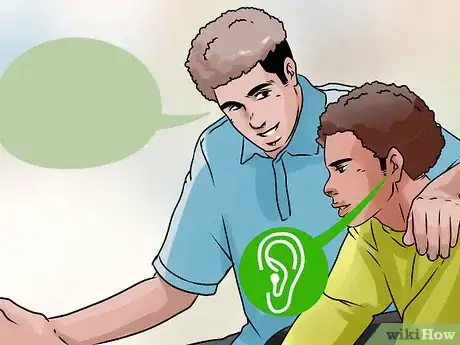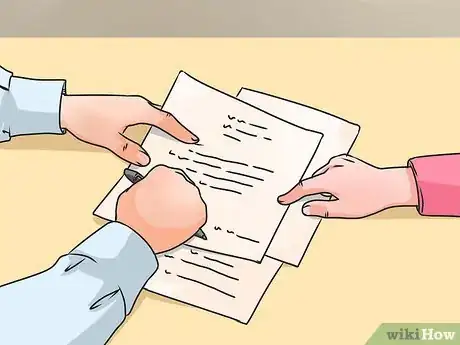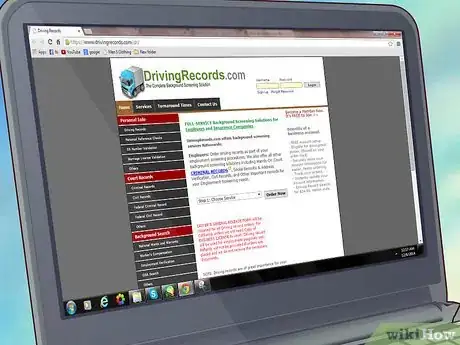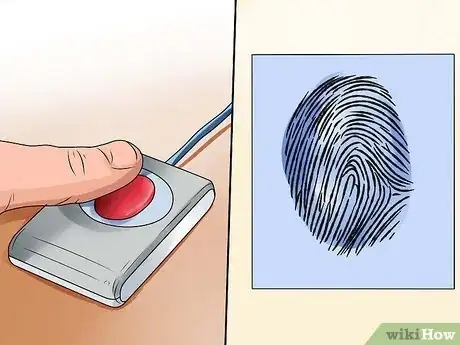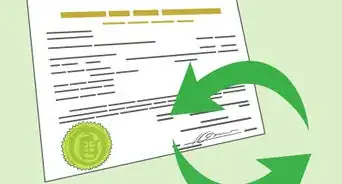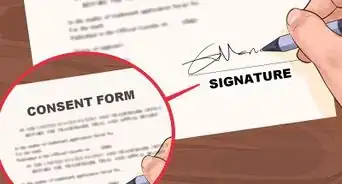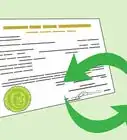This article was written by Jennifer Mueller, JD. Jennifer Mueller is an in-house legal expert at wikiHow. Jennifer reviews, fact-checks, and evaluates wikiHow's legal content to ensure thoroughness and accuracy. She received her JD from Indiana University Maurer School of Law in 2006.
wikiHow marks an article as reader-approved once it receives enough positive feedback. In this case, 97% of readers who voted found the article helpful, earning it our reader-approved status.
This article has been viewed 89,600 times.
If you live in California and you’re thinking about becoming a foster parent, you may be a little overwhelmed by the process. If this is something you’re interested in pursuing, it’s more than manageable. Before you can foster a child, your home must first be licensed by the state. We’ll walk you through everything you need to know about obtaining that. After your home is licensed, the process varies a bit depending on the county you live in, but we’ll walk you through the general steps so that you can welcome a foster child into your home as soon as possible!
Steps
Understanding the Role of a Foster Parent
-
1Consider the needs and circumstances of the children in the foster care system. Children in need of foster care have been removed from homes where they may have been neglected, abused, or exploited.
- These children may have severe emotional problems as a result of their experiences, and may be under the care of more than one doctor or mental health professional.[1]
- Many of these children also are behind in school and may need help in the educational system, as well as having behavior problems in a classroom setting.[2]
-
2Evaluate the costs of being a foster parent. Although there is no charge to attend orientation and training for foster care or adoption, there are costs associated with the qualification process, as well as costs after you are licensed.
- To complete your application process, you may have to order as many as three criminal records clearances for yourself and any co-applicants, one criminal records clearance for any other adults living in your house, pay an application and materials fee, complete CPR and first aid certification, and get other required health screenings. These costs usually don't add up to more than a few hundred dollars.[3]
- If you become certified through a private agency, some of the costs you incur during the application process may be reimbursed after you become a licensed foster parent.[4]
- State law imposes certain minimum personal, safety and space requirements, which may necessitate some renovation to your house.
- For example, all foster homes must have a working smoke detector in the hall outside each bedroom. If you have a pool, it must be fenced or have a locked cover so that it is inaccessible to children under 10. If you decide you want to be a foster parent, your licensing worker will note any hazards or concerns when she conducts her home visit.
- You also must have phone service and a working phone that is unblocked and accessible at all times.[5]
- Foster parents do receive a monthly payment from the California Department of Social Services to help feed and clothe the foster child as well as meet any other material needs the child might have.[6] Basic foster care rates range from $657 to $820 a month.[7]
- The child also receives medical and dental insurance through Medi-Cal.[8]
- Emergency foster parents receive a higher monthly payment because the needs of the children in emergency foster care are greater. Specialized care increments may add between $79 and $840 a month depending on the child's needs assessed by that child's social worker.[9]
- Foster children also receive an additional clothing allowance each year.
Advertisement -
3Appreciate the responsibilities of being a foster parent. Generally, a foster parent is expected to provide a stable and supportive temporary environment for children until the problems with their birth parents are resolved.
- California recognizes several different types of foster homes, which provide different services and care for children.
- For example, emergency foster homes provide children under 12 with temporary care when the children's living situation puts them at immediate risk. Parents in these homes work with social workers to stabilize and assess the child's needs over a 59-day period.
-
4Recognize the role of the state government and court system in foster parenting.
- In many cases, as a foster parent you will be working with a child's caseworker to reunite that child with her parents.
- Foster parents become members of a team that works to care for the child – a team that typically includes the foster parents as well as social workers, other professionals, and the juvenile court system.
- Foster parents must be willing to accept assistance and guidance from social workers, who may know the child's situation and understand the child's needs better than they do.
Applying to Become a Foster Parent
-
1Meet the basic requirements of being a foster parent. Because foster parents are expected to provide stable, loving homes for troubled children, the state imposes certain minimum requirements.
- Generally, foster parents must pass a criminal background check and have a regular source of monthly income to pay all personal and household expenses.[10]
- California state law requires foster parents to be at least 18 years old; however, most counties and private agencies set a higher minimum age. For example, Families for Children requires foster parents to be at least 25 years old,[11] and San Bernardino County looks for foster parents who are at least 28.[12]
- Foster parents may be single or married, but if living with an unmarried partner the relationship should be stable.[13]
- Foster parents may own or rent their home, but they must have at least one spare bedroom and the home must meet all state health and safety standards.[14]
- All foster parents must have a clean driving record, own a car large enough to transport the family, and carry insurance on that car.[15]
-
2Contact your local office of the California Department of Social Services. Each county has a social services office that will guide you through the process of becoming a licensed foster parent.
- Alternately, you can become licensed through a private adoption and foster care agency. For example, Families for Children is a state-licensed private agency that provides adoption and foster care services in 35 Northern California Counties in the Sacramento, Chico, and San Francisco Bay areas.[16]
-
3Talk to a licensing worker and read the orientation packet. Thoroughly read the initial materials given to you to decide if being a foster parent is right for you. The licensing worker will answer any questions you might have.
- Some counties have orientation meetings where the foster care system and the licensing process are fully explained. If your county has these meetings, going to one is an opportunity not only to ask questions but also to meet other families who are considering being foster parents.
-
4Take any required parenting classes. Many counties and private agencies have parenting classes that will teach you how to parent children who have been abused or neglected.
- For example, Sonoma County has a free nine-class series that prospective foster parents can attend that not only teaches them about parenting about also about the court system, and helps them decide if they want to become foster parents.
- Foster parents licensed through Families for Children, a state-licensed private foster family agency in Northern California, must complete 12 hours of pre-certification training and 12 hours continuing education each year after certification.[17]
- After being licensed, you may be required to take continuing education classes. For example, Sonoma County expects licensed foster parents to complete eight hours of continuing education each year.
-
5Complete the licensing application. Before you begin your application, read through it and make a list of any information or documentation you will need.
-
6Get a health screening and a TB test. Foster parents must be screened for tuberculosis various communicable diseases.
- You also must be able to demonstrate that you have adequate physical and mental health to care for children.[18]
-
7Earn CPR and first aid certificates. All foster parents must be certified in CPR and basic first aid.
-
8Get a DMV report. When you apply for a foster care license, you must demonstrate that the car you plan on using to transport your foster child is large enough to accommodate them, insured, and that you or anyone else driving has a current license and a clean driving record.
Preparing to Become a Foster Parent
-
1File your application and get fingerprinted. There typically are no fees to file your application. Fingerprints and child abuse clearances are obtained through the state's LiveScan process.
-
2Submit to a home study. A social worker will schedule a visit to your home to check for adequate bedroom space and ensure you meet the minimal requirements for safety and comfort established by state law.
- For example, two children may share the same bedroom if they are of the same gender, but a boy and a girl cannot share a room unless they are both under four years old. Each child also needs closet and drawer space for clothing and personal possessions.
- Children cannot share bedrooms with adults, although exceptions may be made for infants or toddlers under two.
- The social worker usually will make two visits before licensing a home. In the first visit, she will make note of anything that doesn't meet the state standards, and tell you how to make changes so you are in compliance. On the second visit, she will recheck those areas she'd noted before to ensure they've been brought up to standard.
- During the home study, the social worker also will interview you to learn about your lifestyle, background, and your ideas about foster parenting. These details will help her match you up with the right children, so be sure to mention anything that might be of importance.
-
3Comply with all required background investigations. You may be asked to sign forms granting permission to review your criminal background or other personal information, or provide additional personal or employment references.
Welcoming Your First Foster Child
-
1Get your license to become a foster parent. Once completed, the rest of the licensing process takes between two and four months, depending on the county where you live and the number of applications received.
-
2Greet your first placement. Once you get your license, you will work with employees in the state social services department to decide what types of children would be best suited for your home.
- Some foster parents may be placed with a child immediately after being licensed, while others may have to wait a few months before there is a child that fits their home.
-
3File necessary reports to and accommodate visits from the child's case worker and other professionals. With each child placed in your care, you are responsible for keeping accurate records and providing documentation and reports to social workers and others on a timely basis.[19]
References
- ↑ http://hs.sbcounty.gov/cfs/Lists/Frequently%20Asked%20Questons/Foster%20Care.aspx
- ↑ http://hs.sbcounty.gov/cfs/Lists/Frequently%20Asked%20Questons/Foster%20Care.aspx
- ↑ http://www.adoptuskids.org/for-families/state-adoption-and-foster-care-information/california#foster-requirements
- ↑ http://www.families4children.com/foster_care.cfm
- ↑ http://hs.sbcounty.gov/cfs/Lists/Frequently%20Asked%20Questons/Foster%20Care.aspx
- ↑ http://www.childsworld.ca.gov/pg1347.htm
- ↑ http://hs.sbcounty.gov/cfs/Lists/Frequently%20Asked%20Questons/Foster%20Care.aspx
- ↑ http://www.childsworld.ca.gov/pg1347.htm
- ↑ http://hs.sbcounty.gov/cfs/Lists/Frequently%20Asked%20Questons/Foster%20Care.aspx
- ↑ http://www.families4children.com/fc_req.cfm
- ↑ http://www.families4children.com/fc_req.cfm
- ↑ http://hs.sbcounty.gov/cfs/Lists/Frequently%20Asked%20Questons/Foster%20Care.aspx
- ↑ http://www.families4children.com/fc_req.cfm
- ↑ http://www.families4children.com/fc_req.cfm
- ↑ http://www.families4children.com/fc_req.cfm
- ↑ http://www.families4children.com/index.cfm
- ↑ http://www.families4children.com/fc_req.cfm
- ↑ http://www.families4children.com/fc_req.cfm
- ↑ http://www.families4children.com/fc_req.cfm
About This Article
Becoming a foster parent in California is a complex process, but with some patience and hard work, you can offer a loving home to a child in need. If you're thinking about becoming a foster parent in California, check that you meet state requirements. This includes passing several background checks, having a stable income, secure house, clean driving record, and a car to transport your foster child. This is to ensure that you can give the child the stable home life that they need and deserve. If you meet the requirements, get in touch with your local office of the California Department of Social Services to get the ball rolling. This will usually involve a health screening, home study, and a first aid course to make sure the child will be comfortable in your home. Some counties also require you to take parenting classes that will help you understand and meet your foster child’s needs. For more tips from our Legal co-author, including how to make your foster child feel welcome in your home, read on.


